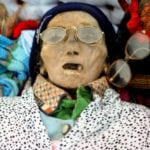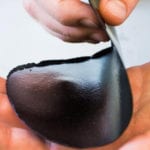 Travel
Travel  Travel
Travel  Creepy
Creepy 10 Haunted Places in Alabama
 History
History Top 10 Tragic Facts about England’s 9 Days Queen
 Food
Food 10 Weird Foods Inspired by Your Favorite Movies
 Religion
Religion 10 Mind-Blowing Claims and Messages Hidden in the Bible Code
 Facts
Facts 10 Things You Never Knew about the History of Gambling
 Weird Stuff
Weird Stuff 10 Cool and Creepy Facts about Collecting Tears
 Humans
Humans The Ten Most Lethal Gunslingers of the Old West
 Misconceptions
Misconceptions 10 Phony Myths and Urban Legends That Just Won’t Die
 History
History 10 Amazing Roman Epitaphs
 Travel
Travel Top 10 Religious Architectural Marvels
 Creepy
Creepy 10 Haunted Places in Alabama
 History
History Top 10 Tragic Facts about England’s 9 Days Queen
Who's Behind Listverse?

Jamie Frater
Head Editor
Jamie founded Listverse due to an insatiable desire to share fascinating, obscure, and bizarre facts. He has been a guest speaker on numerous national radio and television stations and is a five time published author.
More About Us Food
Food 10 Weird Foods Inspired by Your Favorite Movies
 Religion
Religion 10 Mind-Blowing Claims and Messages Hidden in the Bible Code
 Facts
Facts 10 Things You Never Knew about the History of Gambling
 Weird Stuff
Weird Stuff 10 Cool and Creepy Facts about Collecting Tears
 Humans
Humans The Ten Most Lethal Gunslingers of the Old West
 Misconceptions
Misconceptions 10 Phony Myths and Urban Legends That Just Won’t Die
 History
History 10 Amazing Roman Epitaphs
10 Obscure Inventors And Their Wonderful Inventions
The names of those behind the world’s most famous inventions have gone down in history. But each of the mundane products you use every day has its own story and its own fascinating inventor.
10Louis Reard
The Bikini

In 1946, two Frenchmen reinvented the swimsuit. Jacques Heim, a couturier designer from Cannes, first created the two-piece suit, naming it the “Atome” after the French word for “atom.” Heim hired a skywriting plane to advertise his new clothing invention, writing out: “Atome . . . the world’s smallest bathing suit . . . ”
Within three weeks, French automobile designer Louis Reard came up with his own interpretation by making the suit a little more revealing. He used less than 200 square centimeters (30 sq in) of fabric, connecting two inverted triangles with string and fashioning a separate bra top. He called it the “bikini,” after the US atomic testing site at the Bikini Atoll.
Before the bikini, European bathing suits consisted of a halter top and shorts that covered up the navel, so it was difficult for Reard to find a woman who would dare model such a barely-there outfit. He finally turned to an exotic dancer named Micheline Bernardini. Reard debuted the swimsuit on July 5, 1946 at Piscine Molitor, a popular Paris swimming pool. It instantly became a hit with the young women—and, predictably, with the men watching them.
The bikini debuted in prudish America a year later but was not accepted with open arms. It took a couple more decades for the sexual revolution to bring the freedom to express sensuality in public.
Louis Reard advertised his creation as “ . . . smaller than the smallest bathing suit.” He even went so far as to say a two-piece suit wasn’t a genuine bikini “unless it could be pulled through a wedding ring.”
9Aquilino Cosani
The Swiss Ball

Contrary to its name, the Swiss ball, or exercise ball, was actually invented in 1963 by an Italian, a plastics manufacturer named Aquilino Cosani. He invented it as a toy called the “Gymnastik,” making balls in different sizes using burst-resistant vinyl.
Dr. Elseth Kong and Mary Quinton, English physical therapists in Switzerland, then used the ball to develop a neurological rehab program for newborns and infants with cerebral palsy. Taking the same idea, Swiss physical therapist Susan Klein-Vogelbach later in the decade incorporated the ball in adult orthopedic and back rehabilitation treatments in Basel, Switzerland.
Another physical therapist is credited with introducing the ball to the United States. During the 1970s, American doctor Joanne Posner-Mayer saw the ball while working in Copenhagen, and she brought it back with her when she returned home.
8Edward Nairne
Erasers

In 1770, the first version of the rubber eraser was sold by an English optician and engineer named Edward Nairne. Edward got his invention by accident—he meant to pick up bread crumbs to erase some pencil markings, as was common at the time, but his hands landed on a nearby piece of rubber. After he discovered how well it worked, Nairne began marketing and selling rubber cubes as erasers.
Later that year, coincidentally, British chemist Joseph Priestly made the same observation about rubber’s properties. It was Priestly who named the substance (previously simply referred to as “vegetable gum”) for its ability to rub out pencil marks.
Early versions of the rubber eraser were perishable and smelled foul. Charles Goodyear, the man most associated with rubber, solved both problems in 1839 by adding sulfur, a process he called “vulcanization.” Rubber erasers first found their way onto pencils in 1858, but the US denied Hymen L. Lipman a patent for the combination because it simply joined two existing inventions. Yet in the next decade, Lipman did indeed get a patent, and his Faber company started producing pencils with pink rubber ends.
Today, some rubber is still made from the latex of the rubber tree, Hevea brasiliensis, but other types use synthetic materials like styrene and butadiene.
7Robert A. Chesebrough
Vaseline
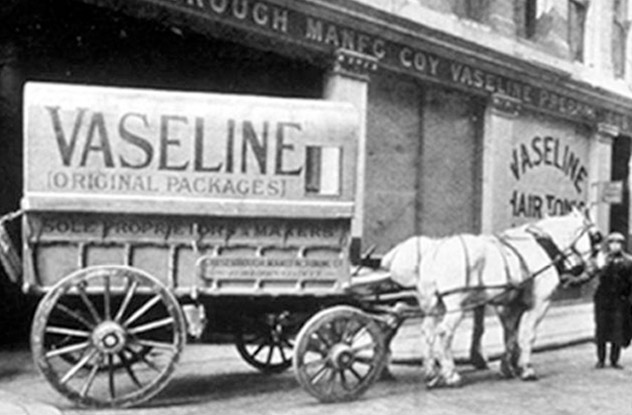
Petroleum jelly has so many uses, from chapped lips to hand lotion and even as an antiseptic. But how and why was this product created?
It came from a British-born, 22-year-old chemist named Robert Chesebrough. After Robert’s job of clarifying kerosene from sperm whale oil became obsolete, he traveled to Titusville, Pennsylvania to research newly discovered petroleum. Robert’s idea sprouted when he witnessed oil workers smearing a sticky substance called Rod Wax onto their cuts and burns. Robert took the material back with him and experimented on it.
To extract the most useful component of the wax, he distilled it until the oil evaporated, leaving behind only thicker fractions. Robert got a patent for this method of making petroleum jelly, which used heat under a vacuum before bone char filtering what remained.
Chesebrough began selling his product in 1870 as “Vaseline.” Determined to make his invention a household product, Robert conducted public demonstrations, cutting or burning himself with either acid or an open flame then applying Vaseline on his wound to show its healing capabilities. Robert even said he ate a spoonful of Vaseline every day for its alleged healing properties.
6Robert Yates
The Can Opener
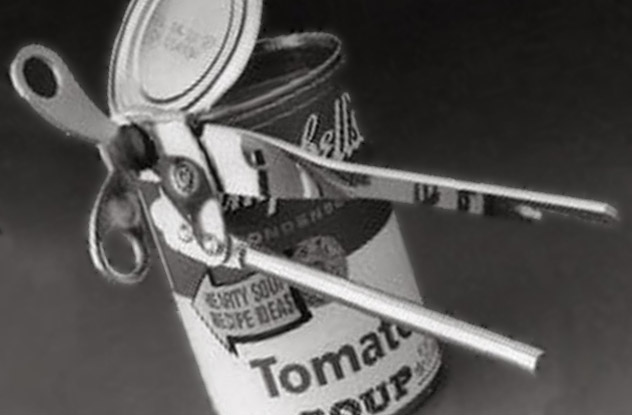
English merchant Peter Durand patented canned food preservation in 1820 and began supplying the Royal Navy with canned foods. The can opener, however, wasn’t invented until decades later. The first cans were made of iron, so people had to struggle to open them with a hammer and chisel.
Robert Yates of Middlesex, UK patented the first can opener on July 13, 1855. This particular cutter used a curved blade and a lever knife. Later in the 1850s, containers became thinner, inspiring Ezra Warner of Waterbury, Connecticut to invent his version of the can opener. His looked like a large, bent bayonet; a sickle sawed the can’s edge while a metal guard prevented it from piercing too deeply. Due to these early versions’ heavy-duty designs, most stayed permanently in grocery stores and weren’t considered domestic items.
It was 1870 when William Lyman invented the familiar household can opener. This opener’s sharp rod pierced the can’s center, an adjustable lever clamped over the can, and then a cutting wheel rotated around the can’s rim. By 1925, the Star Can Opener Company of San Francisco, California came up with a new design that eliminated the need to pierce the center of the can. A second toothed gear called the “Feed Wheel” gripped the can’s edge while rotating the cutting wheel.
5Harry Coover
Superglue
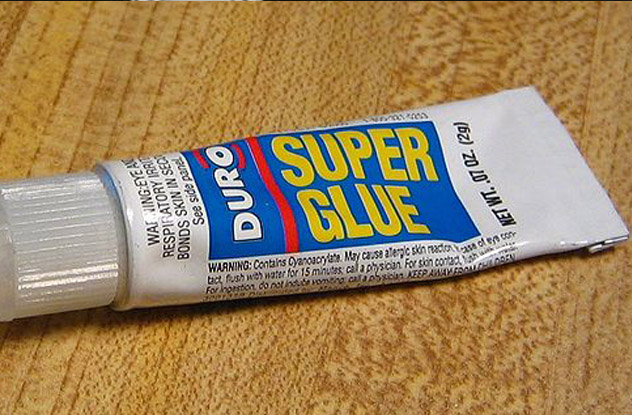
Dr. Harry Coover discovered the powerful adhesive cyanoacrylate while developing clear plastic precision gunsights for Allied soldiers in 1942. He and his colleagues found the chemical nearly impossible to work with because it bonded with every surface. In the end, they discarded their ideas and moved on.
In 1951, Dr. Coover was working for Kodak’s chemical plant in Kingsport, Tennessee, when he accidentally rediscovered cyanoacrylate’s extreme adhesive ability. His team were now researching heat-resistant polymers for jet airplanes when they began experimenting with cyanoacrylate. Once again, it thwarted all conventional work because it bonded with anything and everything. Coover at last realized the chemical’s true value. By the end of the decade, he was marketing and selling the superglue, calling it “Eastman 910.”
During the Vietnam War, field surgeons sprayed the adhesive onto soldiers’ wounds to stop bleeding and buy enough time to get to a hospital. The glue later even helped in forensics because of its ability to capture and maintain fingerprints.
4Diane von Furstenberg
The Wrap Dress
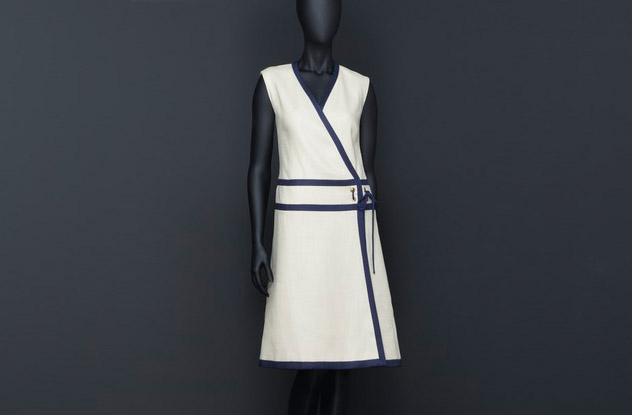
The wrap dress’s Belgium-born designer, Diane von Furstenberg, got her start after she married Italian Prince Egon von Furstenberg. The marriage, oddly enough, convinced her for the first time that wanted more from life than just to be married into royalty. So in 1969, with no training as a designer, she became an apprentice to an Italian textile manufacturer, Angelo Ferretti. Furstenberg’s marriage ended three years later, and in the 1970s, she started work in the New York fashion industry.
Furstenberg was inspired to create the wrap dress after she saw President Nixon’s daughter, Julie Nixon Eisenhower, wear a wrap skirt with a wrap blouse. The first wrap dress used a jersey knit and ’70s-style colors and patterns. It was an instant hit when it first appeared in 1976, selling more than five million units.
3Tim Blake
Surfboards

In ancient Hawaii, surfing symbolized not just culture but spiritual recreation. Hawaiians would often pray to the gods for good waves and the right wood for surfboard construction—wood from the Koa, Wili Wili, and Ula trees. But after Captain Cook and the early European missionaries arrived in the 18th and 19th centuries, surfing almost became extinct until the start of the 20th century, when the missionaries’ influences weakened.
The new era of surfboards emerged in 1926, when Tom Blake invented the hollow surfboard. The 4.5-meter (15 ft) board had hundreds of holes drilled in it, covered only by a thin layer of wood on top and bottom. Blake then took it a step further by adding a fin to the bottom tail of his new design, giving the surfer better ability to maneuver.
2Earle Haas
Tampons
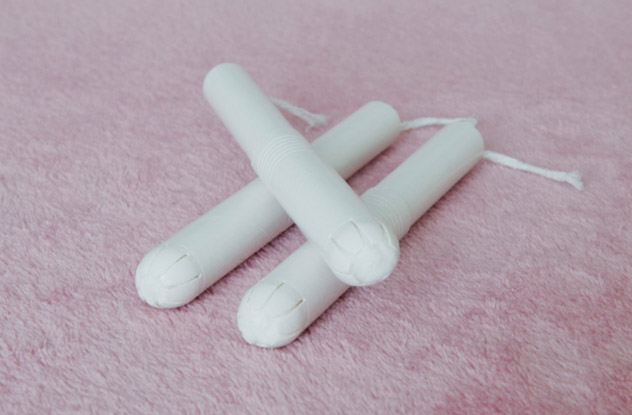
For thousands of years, women improvised with cloth, wool, lint, and even grass to capture their menstrual blood. But tampons as we know them, with their tube applicators, were invented and patented by Dr. Earle Haas of Denver, Colorado in November 1931. Haas later trademarked the brand name “Tampax,” which he coined by combining the words “tampon” and “vaginal packs.”
In 1934, a group of investors purchased Dr. Haas’s patent and created the Tampax Sales Corporation, seeking to market the products to a generation of women totally unfamiliar with them. The first Tampax ad appeared in American Weekly on July 26, 1936, reading, “ . . . Your doctor will be the first to tell you that Tampax is the most natural and the most hygienic method of sanitary protection . . . accepted for advertising by the American Medical Association.” The ad was misleading—the AMA hadn’t endorsed the product; the Journal of American Medical Association had merely published one of its ads—but it convinced buyers that Tampax was sanctioned by the medical community.
In 1945, the product got actual AMA endorsement, of a sort. Dr. Robert L. Dickenson wrote an article for the Journal with statistics and analysis supporting the use of tampons. In the same article, Dickenson pointed out multiple reasons that women should choose tampons over pads. Pads cause irritation, increase odor, appear too bulky under clothing, promote contamination, and also are “responsible for rhythmic play of pressure against surfaces uniquely alert to erotic feeling.”
1Lonnie G. Johnson
The Super Soaker

Lonnie Johnson worked for NASA and the US Air Force and was also an inventor in his own right, getting 40 different patents for his many ideas. But he is famous not for the adult part of his life but for the child within him.
Johnson was conducting an experiment with a heat pump in 1982, using water instead of the usual Freon. When he hooked the pump to his bathroom sink and turned the water on, high-pressured water immediately shot from the pump into his tub. This inspired Johnson to turn from the pump and divert his idea into developing a new water gun.
The finished product stored air pressure that blasted water out in a stream. Johnson couldn’t manufacture and sell the gun himself, so he partnered with Daisy, a company known for its compressed-air BB and pellet guns. Daisy’s marketing failed, so Johnson switched to another company, Entertech—which also failed and soon went bankrupt.
In 1989, Mr. Johnson met with Larami president Myung Song and demonstrated a newly improved model. They signed a contract and changed the name of the pressurized water gun from “Power Drencher” to “Super Soaker.” Larami filed for multiple patents and started production, changing Johnson’s life—and the lives of children all over the world.
I enjoy pop culture, watching TV shows like The Walking Dead, The Americans, and Hannibal, and I love superhero movies. If you’re curious about what I look like, you can check me out on the Twitta’. Please follow me because all my followers are ‘bots.





